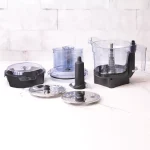A belt cinched at the waist gives you curves like an hourglass, sleek yet full. Flowing sleeves add flair without effort; perfect if styled well. Also, for straight bodies?
Corsets work magic by drawing in curves where needed—making every angle flattering.
Understanding Indian Attire Sizes
When you’re picking Indian attire, know your body shape first. For those with a pear-shaped figure, your body’s lower part is wider than the top. Choose outfits that don’t highlight hips and thighs much.
Anarkalis are great because they focus on the upper half and distract from the broader areas below. They often come in vibrant colors, making them ideal for this body type by attracting eyes upward. For straight figures, look for pieces adding curves like corsets or flared skirts that define your waist nicely.
If you have an apple shape, pick clothes celebrating curves without overly emphasizing the waistline. In all cases, choosing right means wearing what makes you feel good about yourself while paying attention to color and cut suitable for your build. At stores like Nihal Fashions, finding something flattering no matter your size is easy thanks to our wide range, which is tailored toward confidently embracing every unique shape.
Measuring Yourself for Perfect Fit
To get the perfect fit, start with your waist. Find the thinnest part and wrap a tape measure around it—there should be no space between you and the tape. Next, move to your hips; go for the widest point there without slack on the tape.
For kameez or anarkali length, measure from one shoulder down to how long you want them or to your toes for Anarkalis. Your shoulders need attention, too; they span from one edge across your back to another without curving around. Sleeve length is next: begin at your shoulder bone’s end and let it fall where you prefer those sleeves to end.
Measure armholes by starting high on each shoulder and moving into underarm creases. Wrap around upper arms and wrists snugly, ensuring no gaps or loose ends. Lastly, if Salwar suits your fancy, don’t forget that tie spot where belts normally sit.
Encircle it tightly yet comfortably, ensuring precision in every fold to create flattering silhouettes and lasting impressions.
Custom Tailoring vs. Ready-to-Wear
When you pick custom tailoring, like at Nihal Fashions, first make only one item. Try it on to check the fit. Tell your tailor any changes needed.
They adjust this piece first. After that, order more clothes based on this perfect-fit model. You should bring your fabric to the tailor as soon as possible and ask for a “first fitting” right away.
Once they adjust it, have a final try-on before making more pieces. If you’re in New Delhi or Mumbai, there’s time for travel while your orders are done. Always seek good tailors through hotel recommendations to avoid issues like color run from added details ruining an outfit—a problem not with material but extra touches by the tailor.
Bringing an already well-fitting garment can guide them better.
Fabrics and Their Impact on Fit
When you pick fabric for your Indian dress, think about how it shapes your body. Soft materials like silk drape well and can make a fit feel loose. On the other hand, stiff cotton holds its shape better but might feel tighter.
Because of this, each type of cloth will look different on you. Also, weather plays a part in choosing the right one; light fabrics are best for hot days, while thicker ones keep you warm when it’s cold out. Remember these points next time to ensure what you wear not only looks good but feels comfortable, too.
Adjusting Traditional Wear to Your Body Type
To match your body shape with the ideal Indian dress, start by knowing your type. For those with an apple shape, choose Anarkalis; these highlight arms and balance shoulders to hips. They flare out from below the bust, making them perfect for you.
Add A-line kurtis paired with leggings for a look that focuses on slim legs instead of the waist area. Pear shapes should go for floor-length Anarkalis that are snug at the waist but extend into a generous flow beneath it, shifting focus from wider hips to a narrow upper body. Both styles ensure comfort while enhancing your best features effortlessly through our selection at Nihal Fashions’ online store, where shopping is made simple right from home.
Navigating Online Size Charts Effectively
To use online size charts well, know that all brands are different. Indian bodies don’t match US or UK sizes exactly. This makes finding the right fit hard without changes or custom orders.
Until India has its own standard sizes, look closely at each brand’s guide when buying Indian clothes online. Measure your body as shown on websites to compare with their chart. Pay attention to length and width across key areas like shoulders and waist for a good fit in shirts or pants.
Also, check return policies in case something doesn’t fit right so you can shop worry-free.
Tips for Alterations and Adjustments
When your Indian outfit doesn’t fit right, don’t worry. Most of us face this issue. Whether it’s a kurta or kameez that’s too large, there are ways to adjust it for a perfect fit.
One common problem is when the shoulder and armhole areas don’t match your body well. This mismatch also makes it hard to get a good waist fit. Over the years, through trial and error, I’ve learned some tricks to fix oversized garments—believe me, I’ve been there!
Focusing on alterations like adding darts in the shoulder can create more structure where you need it most—right across the top part of your attire. For waist adjustments, similar techniques apply but are tailored specifically around mid-section fitting needs, ensuring that everything sits nicely where it is supposed to without feeling tight or uncomfortable. Remember these tips next time an heirloom saree blouse from Nihal Fashion seems off-fit – little changes can make big differences, making you feel confident and gorgeous every wear.
Choosing the right size in Indian wear from Nihal Fashions makes a big difference. First, always check the size chart before buying. Next, know your body’s true measurements; this helps a lot.
Remember, different styles fit differently, so try on various types if you can. Also, think about what you’ll wear underneath since it might change how things fit on top.
Lastly, alterations are common with traditional attire to get that perfect look and feel for any event or day-to-day life while showcasing beautiful craftsmanship unique to each piece.



